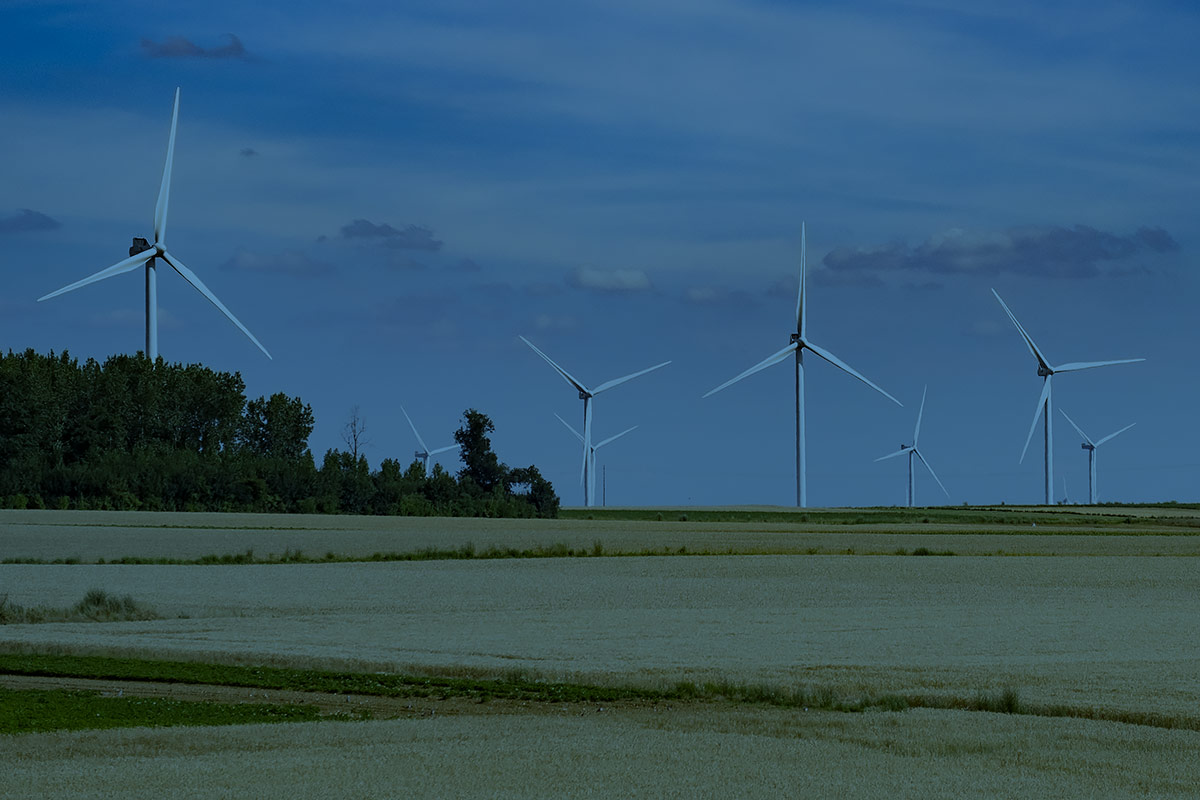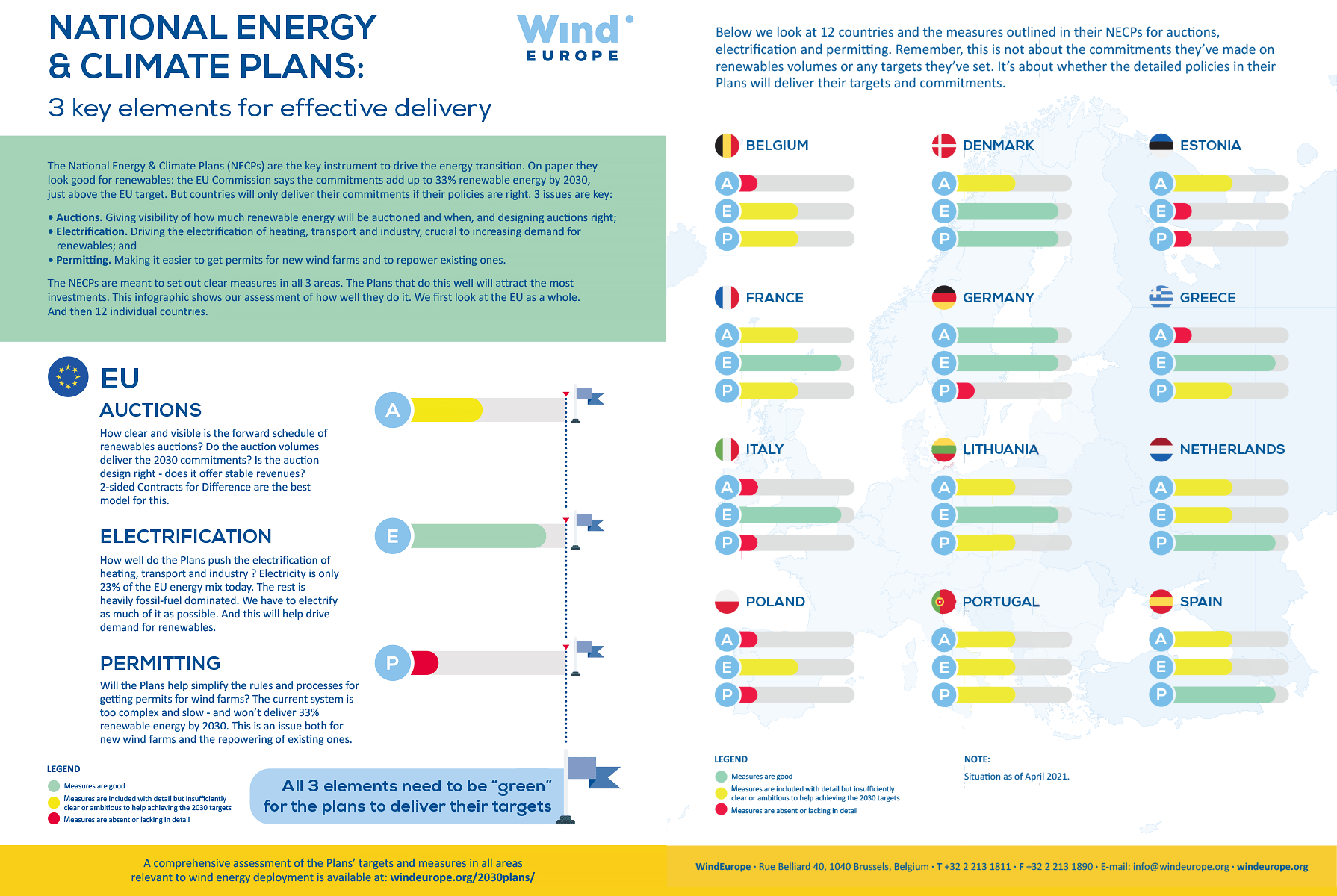24 July 2020
NECP analysis: permitting problems still a major stumbling block

26 European countries have submitted their National Energy and Climate Plans (NECPs) to the EU. WindEurope has analysed what those plans entail for wind energy deployment in Europe. The main hurdle remains permitting – many NECPs do not set out effective solutions to existing permitting bottlenecks.
“For the first time, the NECPs offer a long-term planning horizon with clear commitments in terms of auction schedules, volumes and incentives,” says WindEurope CEO, Giles Dickson. “The 2030 National Plans are the wind sector’s investment brochures. They allow banks and developers to plan future investments into wind. But the wind volumes in the NECPs remain purely academic if the policies to unlock these investments are not in place. The EU needs to push Member States to make the necessary improvements – especially in permitting.”
With regards to the share of renewables, the submitted NECPs would allow for 33% renewables in the final energy mix by 2030. The current EU target stands at 32%. Across the continent, Member States plan to increase their wind installations, both onshore and offshore. If the NECP pledges are fulfilled, Europe will have installed 339 GW of wind capacity by 2030, 268 GW onshore and 71 GW offshore. This represents a significant increase in wind installations from 169 GW today.
“Most NECPs include a decent level of visibility to future auction schedules,” adds Dickson. “Especially Germany, Denmark, France and the Netherlands offer good long-term visibility. But we need to install more wind to be on track with the Green Deal. In 2019 we installed 15.4 GW. But we need to install at least 20 GW each year to stay on track for the Green Deal. The climate emergency and electrification targets make the installation of wind energy an absolute necessity.”
The main hurdle in the NECPs are the permitting regulations. The vast majority of countries do not mention what measures will be taken to ease permitting for new and repowered projects. Among them, major markets like Germany, where auctions continue to be heavily undersubscribed due to permitting bottlenecks.
“Wind energy is the backbone in delivering both a green recovery and decarbonisation by 2050. If the EU does not get permitting of new wind farm right as soon as possible, Europe will miss its energy and climate targets badly. Easing permitting is almost completely missing in the NECPs submitted. Europe needs to sort this out urgently. Unjustified set-back rules need to be removed. Environmental assessment procedures for new projects need to be streamlined and clarified. Approved projects need more legal certainty. It is not acceptable that simple onshore wind projects take 5 years and longer to be permitted”, says Giles Dickson.
WindEurope members can find a full analysis of the NECPs here
Background:
NECPs are the framework within which EU Member States plan, in an integrated manner, their climate and energy objectives, targets, policies and measures from 2021 to 2030. The development of these Plans is a legal requirement under the 2018 Clean Energy Package. Each country must then submit a progress report every two years. The NECP process aims to ensure that the EU 2030 targets for greenhouse gas emission reductions, renewable energy, energy efficiency and electricity interconnection are met.
The EU Commission will, as part of the energy union report, monitor EU progress towards achieving these targets. A first assessment of the NECPs by the EU Commission is planned for September 2020. WindEurope has been faster. We took a closer look at the 26 plans submitted (due to a government reshuffle Ireland has not yet submitted its NECP) and analysed their impact on wind energy deployment in the EU-27 as well as the respective Member States. The WindEurope analysis focused on indicators such as Auction Schedule, Permitting, PPAs, Electrification and others.


